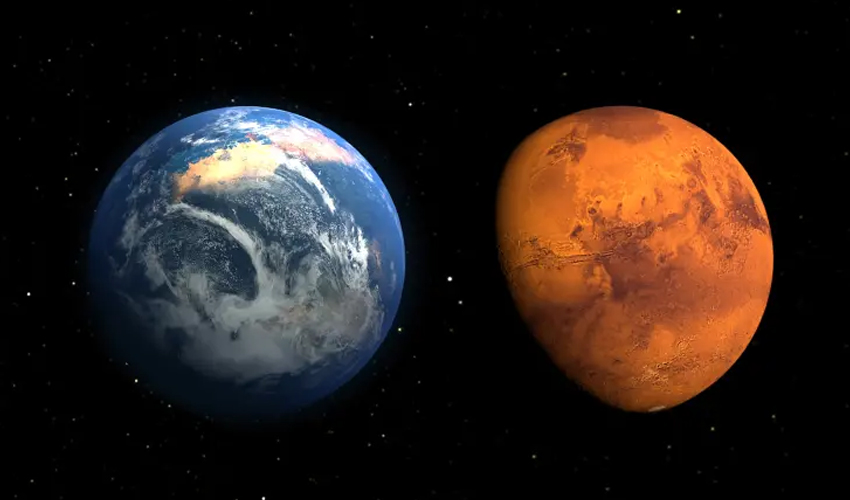Humans have always been captivated by the stars, dreaming of venturing beyond our planet’s atmosphere and delving into the vast mysteries of space. This dream began to materialize in the latter half of the 20th century, thanks to the development of rockets capable of overcoming gravity to attain orbital velocities. Space exploration was no longer a mere fantasy; it was becoming an achievable reality.

The Pioneering Era of Space Exploration
The journey to space exploration began with the harrowing developments of long-distance rockets during a dark period in history. In the 1930s and 1940s, Nazi Germany realized the potential of using rockets as weapons. The London skyline was terrorized by V-2 missiles during World War II, marking a significant yet grim milestone in rocket technology. However, after the war, this technology laid the foundation for something far greater than anyone could have anticipated. Both the United States and the Soviet Union saw the potential for space exploration and began their own missile programs, signaling the start of a new era.
The Soviet Union took a significant lead in the space race with the launch of Sputnik 1, the first artificial satellite, on October 4, 1957. The world watched in awe as humanity’s first object orbited Earth, heralding the dawn of the space age. This achievement was soon followed by an even more monumental event. On April 12, 1961, Russian Lt. Yuri Gagarin became the first human to orbit Earth aboard Vostok 1. His 108-minute flight took him 327 kilometers above the Earth, making him not only a national hero but an international celebrity. Gagarin’s journey symbolized the culmination of human ingenuity and bravery, marking a pivotal moment in our history.
Following Gagarin’s historic flight, the United States intensified its efforts in space exploration. The launch of Explorer 1 in 1958 marked the beginning of America’s journey into space, followed by Alan Shepard becoming the first American in space in 1961. John Glenn’s orbit around Earth in 1962 further fueled the competitive spirit of the space race. However, the most ambitious goal was yet to come. In 1961, President John F. Kennedy set a national goal of landing a man on the Moon and returning him safely to Earth within a decade. This dream was realized on July 20, 1969, when Neil Armstrong made ‘one giant leap for mankind’ as he stepped onto the Moon’s surface. The Apollo missions between 1969 and 1972 not only explored the Moon but also united people around the world in awe and wonder.
The era of space exploration brought about significant advancements and discoveries. Unmanned spacecraft mapped and probed the Moon, and the Mariner spacecraft orbited and mapped Mars. The Voyager spacecraft provided us with detailed images of Jupiter and Saturn, expanding our knowledge of the universe. The launch of Skylab, America’s first space station, and the Apollo Soyuz Test Project, the world’s first internationally crewed space mission, highlighted the 1970s as a decade of human-spaceflight highlights.
The 1980s witnessed the expansion of satellite communications, which revolutionized how we view the world. Satellites provided new insights into the ozone hole over Antarctica, pinpointed forest fires, and gave us a glimpse into the aftermath of the Chernobyl disaster. The launch of the space shuttle Columbia in 1981 marked a new era of space exploration, relying on the reusable shuttle for most civilian and military space missions. Despite the tragic losses of the Challenger and Columbia shuttles, the space shuttle program demonstrated the potential and risks of space exploration.
The Legacy of Yuri Gagarin
Moving from his early life and career, Gagarin’s transition into the Soviet Air Forces as a pilot laid the foundation for his selection into the Soviet space program. His passion for flying and his commendable performance as a pilot made him an ideal candidate for what would be one of the most significant milestones in human history. Gagarin’s selection was followed by rigorous training, where he and his fellow cosmonauts were subjected to tests that pushed the limits of their physical and psychological endurance. Amidst these trials, Gagarin’s character – his humility, dedication, and unwavering spirit – shone through, endearing him to his peers and superiors alike.
April 12, 1961, marked a monumental chapter in the annals of human exploration. Aboard Vostok 1, Gagarin orbited the Earth, realizing humanity’s age-old dream of reaching the stars. This 108-minute flight was not just a triumph for Gagarin or the Soviet Union, but a victory for mankind. Gagarin’s words, ‘Poyekhali!’ (‘Let’s go!’) as Vostok 1 took off, echoed around the world, symbolizing the dawn of a new era in space exploration. His journey inspired millions and made him an international hero, a symbol of hope and human potential.
Gagarin’s legacy extends far beyond his historic flight. He became an advocate for space exploration and a symbol of peace during the height of the Cold War. His untimely death in 1968 was a profound loss, not just for the Soviet Union, but for the world. However, his legacy lives on, inspiring new generations to look up at the stars and dream of the possibilities that lie beyond our world.
The future of space exploration is as bright as the stars that beckon us. In the decades following Gagarin’s flight, we have seen remarkable achievements. The Apollo missions, Skylab, the Space Shuttle program, and the International Space Station are but chapters in the ongoing saga of human exploration. Today, with the Mars rovers, the prospects of manned missions to Mars, and the development of new, more efficient launch systems, we stand on the precipice of new frontiers.
Gagarin’s journey reminds us that the impossible can become possible with courage, imagination, and the relentless pursuit of knowledge. As we look to the future, let us carry forward the spirit of exploration that Gagarin embodied – a spirit of unity, curiosity, and boundless hope. The cosmos awaits, and in the words of Gagarin, ‘Let’s go!’
Related posts:
A Brief History of Space Exploration
Yuri Gagarin
Soviet cosmonaut made pioneering spaceflight 60 years ago





